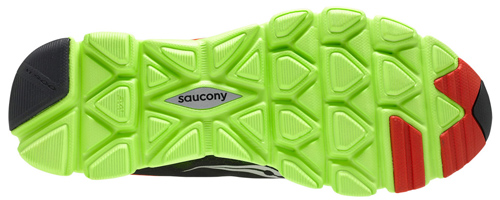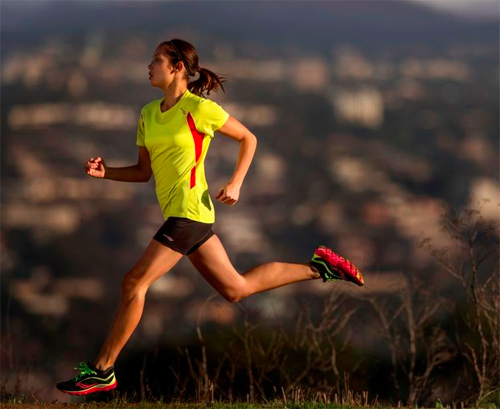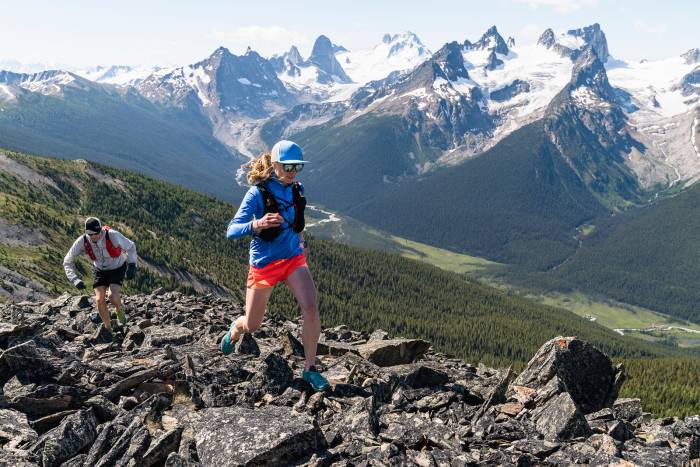The shoe hit stores this week. As a running junkie, Saucony’s Virrata model was on my drool list. The brand previewed it last summer as “the most cushioned shoe for its weight on the market.”
A weird claim to fame for sure. But in the hand it makes sense — a thick slab of foam offers a sole/midsole combination that weighs almost nothing. There’s no traditional rubber on the underside of this shoe, saving weight and also creating a unique feel as you run.

At $90, Saucony sells the Virrata as a training model, not a racer. But it is the lightest training shoe the brand has ever built. On my scale, my big size 13s weigh about 8 ounces a shoe. A men’s sample size 9, Saucony claims, is a feathery 6.5 ounces per foot.
Unlike most trainers, the Virratas are zero-drop shoes. There is a 0mm heel-to-forefoot offset. This style means you need to run differently if you’re used to normal running shoe models.
Heel strikes are a no-no — the Virrata is made to train you to run with a mid-foot stride and quicker steps, or “more naturally,” as the industry likes to say.

The aforementioned “slab” of foam is a new type of EVA foam. It’s springy and light. Saucony applies it thick on the Virrata, giving an 18mm ply of foam underfoot for the midsole. Plenty of protection from the road as you pound miles is the result.
I took a pair for a first test run earlier this week. The roads were a bit snowy, but I managed to find clean pavement for a few miles.
First impressions? Grip was good, even on slippery spots. The shoe is comfortable and easy to run in. They feel light on the feet.
More interesting, Saucony cites the Virrata hits a sweet spot between a “natural, deconstructed running experience and improved cushioning.” Sounds wonky, but I’d actually agree with that description — I felt like this shoe made me run differently, more conscious of my stride (dare I say more “natural”).

The punishment for a sloppy stride is not high if you get tired. There’s so much cushion underfoot that you can misstep or “pound” for stretches when fatigued and the Virrata will not punish like other zero-drop models can.
That said, after a second run in the shoes I was a bit sore. Zero-drop shoes take time to adjust to on pavement. I often run in 4mm or 6mm drop models. The cushioned Virrata is a nice bridge for getting into zero-drop. I can’t wait to put a few more miles down in the shoe to see how it effects my stride and my style over the long run.
—Editor Stephen Regenold recently ran an ultra in the Marin Headlands of California. See his story “Hills, Mud, Rain define tough 50-Mile Ultra Race”








